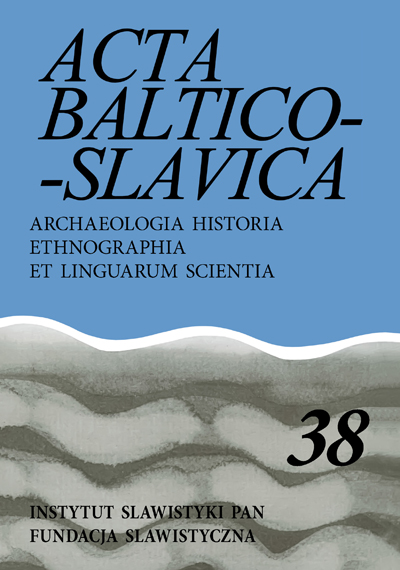Przyczynek do obrazu szlachty Inflant Polskich w łotewskich źródłach i opracowaniach historycznych początku XX w
A contribution to the image of Polish Livonia nobility in the Latvian historical sources and studies of the early twentieth century
Latvian perspective
Author(s): Beata Biesiadowska-MagdziarzSubject(s): History, Social Sciences, Cultural history, Modern Age, Culture and social structure
Published by: Instytut Slawistyki Polskiej Akademii Nauk
Keywords: nobility; Polish Livonia; Latvia; Latgalia; cultural influences
Summary/Abstract: Polish literature devoted to the role of the Poles in shaping Latvian culture presents unanimity as far as the positive role and results of this influence are concerned. However diametrically opposite Latvian perspective particularly clear in the first years of the existence of independent Latvia needs to be highlighted here. Contacts between the Latvians and Poles and their cultures differed in different parts of Latvia since the beginning of the Polish presence in this country. The period called ‘the Polish times in Latvia’ in Latvian historical sources lasted the longest in Latgale (1561–1772), i.e. in the so called Polish Livonia. The Polish influence on Latvian folk culture was the strongest there. This period, especially the scale of the influence of Polish culture on Latvian native culture as well as general development of this region, was strongly criticized by numerous Latvian historians. The interest of the Polish noblemen in developing Latgale was subjected to criticism, too. Considering these lands as their own the Poles were not interested in propagating national ideas among local village people who, according to the Polish nobles, were to succumb to complete polonisation. Great influence of the Polish nobility on culture, economy and creating the national identity of the Latgalian Latvians, the policy of the Polish clergy and polonisation of the local people resulted in a negative opinion of the Polish influence in the Latvian lands. The study is an attempt to outline the issue which Polish researchers have not paid attention to so far. Nevertheless, regarding rich material it needs detailed research on a large scale.
Journal: Acta Baltico Slavica
- Issue Year: 2014
- Issue No: 38
- Page Range: 89-97
- Page Count: 9
- Language: Polish

